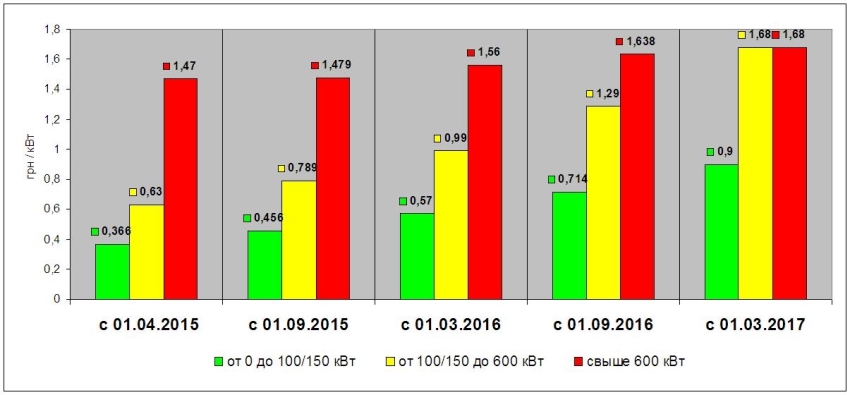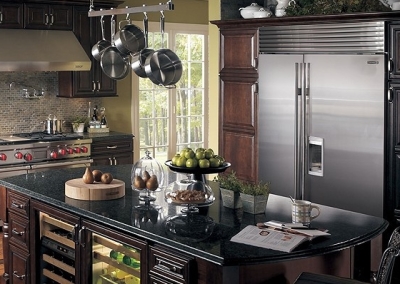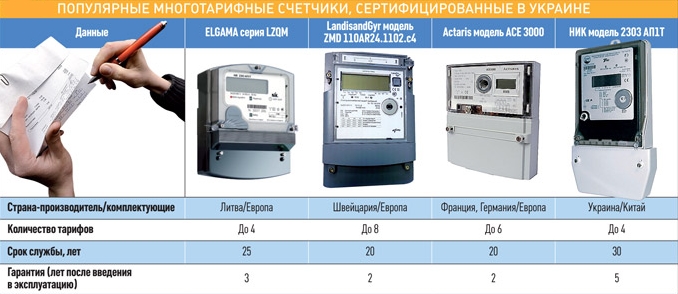Вчимося економити: як користуватися електроприладами з розумом
Ми незалежно перевіряємо товари та технології, які рекомендуємо.

Починаючи з 1 вересня 2015 року по 29 лютого 2016 року в силу вступаю вже нові тарифи.
Для тих, хто проживає в не газифікованих будинках і в будинках з електричним опаленням, будуть діяти наступні тарифи:
- до 3600 кВт — копійок 0,456 грн./кВт;
- понад 3600 кВт — 1,479 грн./кВт.
Зверніть увагу на той факт, що осіннє підвищення тарифів — далеко не останнє. Чергове підняття цін заплановано на 1 березня 2016 року. Але і це ще не все. Тарифи зростуть і в наступному вересні, і в березні 2017 року. До речі, в 2017 році планується відмова від диференціації тарифів для міських і сільських жителів. Також, буде один загальний тариф, як для тих, хто готує їжу, користуючись газом, так і для тих, хто користується електроплитою. А в будинках з електричним опаленням буде знижена норма споживання електроенергії.
У березні 2017 року всім жителям міст і сіл платити «за світло» доведеться за такими тарифами:
- до 100 кВт — 0,9 грн./кВт;
- понад 600 кВт — 1,68 грн./кВт.
У будинках з електричним опаленням по таким:
- до 3000 кВт — копійок 0,9 грн./кВт;
- понад 3000 кВт — 1,68 грн./кВт.
На тлі такого стрімкого зростання цін за споживану електроенергію фраза «йдучи, гасіть світло» стає вельми актуальною. Однак, якщо до питання скорочення енергоспоживання підійти з розумом, то ваші рахунки «за світло» залишаться на колишньому рівні, або навіть знизяться!
 |
Щоб користуватися побутовою технікою і при цьому економити, вам достатньо знати, що і коли включати, вимикати що, а що змінити.
Як скоротити споживання електроенергії?
 |
| Холодильники з класом енергоспоживання А+++ найбільш економні |
Як не дивно, але економія починається не з вимкненого у ванній світла, а з розуміння різниці між електроприладами класу «D», «А» і «А+++». Згідно з директивою щодо маркування етикеткою електричної ефективності, прийнятої в ЄС ще в 1994 році, вся побутова техніка в обов'язковому порядку має позначення класу енергоспоживання.
У наведеній таблиці вказані класи электроэффективности для холодильників, де EEI — індекс енергетичної ефективності використання. Розраховується цей показник як співвідношення теоретичного і фактичного енергоспоживання для кожної конкретної моделі холодильника. При цьому враховуються всі функціональні і технічні характеристики, заявлені виробником. Ця класифікація прийнята в липні 2014 року, і відповідні індекси актуальні для всієї техніки, випущеної пізніше літа 2014 року.
Давайте порахуємо, яка ж різниця між вартістю електроенергії, споживаної за 1 рік холодильником класу «А» та класу «А+++». Як приклад використовуємо моделі LG GA-B409TGMR чорний і Samsung RB31FERNBSA сріблястий . Бренди, ціна та основні характеристики холодильників максимально наближені, принципова відмінність тільки в споживаної потужності.
Холодильник «А» споживає за рік 369 кВт. За три роки (2015, 2016 та 2017)вартість спожитої електроенергії складе 720 грн. (151+237+332 грн. / 2015+2016+2017 року).
Холодильник «А+++» споживає за рік 172 кВт. За три роки (2015, 2016 та 2017) вартість спожитої електроенергії складе 335 грн. (71+110+154 грн./ 2015+2016+2017 року).
Так, на перший погляд здається, що економія в 385 грн. за три роки — несуттєва. Але ж холодильник купують не на три роки, а за 10-15 років служби, так що клас А+++» збереже вам пристойну суму. Зауважу, що розрахунок вартості електроенергії вівся виходячи із загального споживання в місяць не більше 100/150 кВт. Якщо ж перевищити ліміт в 100/150 кВт, то різниця буде ще суттєвішим.
Спимо і економимо
Ситуація з економією на класі споживання електроенергії справедлива не лише для холодильника. Схожі показники характерні для пральних і посудомийних машин.
Однак, на відміну від холодильника, який працює постійно, пральна і посудомийна машини працюють періодично. Така специфіка роботи дозволяє використовувати прилади в певний час.
Значно знизити витрати на електроенергію при використанні пральної і посудомийної машини допоможе зонний електролічильник. Залежно від часу доби, багатозонний лічильник використовує відповідні тарифи. Подібні прилади обліку дають змогу економити на вартості електроенергії близько 15-20% (двозонний лічильник) і 30-35% (трьохзонний лічильник).
 |
Досить запускати прання білизни або миття посуду після 23:00 і витрати на електроенергію істотно знизяться. Ви спите і економите! Єдиним недоліком можна вважати необхідність планувати використання побутової техніки. Якщо ви будете активно користуватися енергоємними приладами в період з 8:00 до 11:00 і з 20:00 до 22:00, то нічна економія може зійти нанівець. Але при розумному плануванні можна легко звикнути до використання техніки «правильне» і економити на рахунках за електрику, не відчуваючи жодних незручностей.
Для заміни звичайного електролічильника на багатозонний, необхідно подати заявку в вашу элктрокомпанию. Ціна зонного лічильника залежить від конкретної моделі і варіюється в межах від 1100 до 3000 грн. Вартість процедури заміни залежить від району проживання і коливається від 200 до 500 грн.
Маленькі тонкощі і велика економія
Придбання енергоефективною техніки та використання багатозонних лічильників – дуже ефективні методи економії, але не єдині. Є маленькі тонкощі в роботі побутових приладів, комплексне застосування яких дасть змогу отримати велику економію.
— зменшуйте навантаження на компресор, включайте менш інтенсивний режим при невеликому завантаженні камери, користуйтеся режимом «канікули»;
— зберігайте в холодильнику упаковані або поміщені в пластиковий контейнер продукти, зменшуючи випаровування, ви скоротите час роботи компресора;
— при короткочасному зберіганні продуктів не знижуйте температуру в морозилці до максимуму, зниження температури на один градус збільшує витрату електрики на 3-5%;
— перед тим, як помістити приготовлену їжу в холодильник, охолоджуйте її до кімнатної температури;
— у моделях з двома компресорами, їдучи у відпустку або відрядження можна відключати один з компресорів, попередньо розвантаживши відповідну камеру;
— намагайтеся відкривати дверцята холодильника на короткий час і щільно закривайте її;
— встановлюйте холодильник подалі від опалювальних радіаторів і поза зони попадання прямих сонячних променів.
 |
— користуючись «економним режимом», ви економите воду, ніж електрика, встановлюйте оптимальні параметри прання самостійно;
— завантажуйте барабан на 85-90% від максимуму, при такому завантаженні співвідношення виробленої роботи і витраченої енергії буде оптимальним;
— намагайтеся не включати підігрів води без особливої потреби, порошок добре розчиняється і пере вже при 40°С;
— своєчасно робіть чищення фільтра, це значно полегшить роботу насоса, що відкачує воду з машинки, і тим самим знизить електроспоживання.
— використовуйте машину тільки при повному завантаженні, енергоспоживання практично не залежить від кількості завантаженої посуди;
— мийте посуд перед завантаженням в посудомийку, така процедура дасть змогу скоротити час миття;
— для миття посуду не потрібно світло на кухні, не забувайте вимикати його.
— не використовуйте мікрохвильову піч для розморожування продуктів великого об'єму, краще поставити їх у відділення холодильника, призначене для зберігання овочів;
— слідкуйте за чистотою, своєчасно видаляйте жир і бруд зі стінок печі, магнетрону потрібно менше часу для розігріву продуктів, отже, буде витрачено менше енергії;
— користуйтеся мікрохвильовою піччю тільки для розігріву, а не для приготування їжі.
— не чекайте, поки пилозбірник повністю засмітиться, чим частіше ви будете чистити мішок порохотяга, тим менше електроенергії потрібно для ефективного прибирання;
— поєднуйте пилосос і віник (мітлу), заметушився великий сор віником, а пилосос використовуйте для більш «тонкої» прибирання.
— не користуйтеся світильниками або торшерами при включеній люстрі;
— використовуйте автоматичні вимикачі (фотоелементи і датчики руху);
— намагайтеся не забувати вимикати за собою світло;
— замініть застарілі лампи розжарювання на більш економні люмінесцентні або світлодіодні (див. "Як економити: вибираємо лампочки").
Запам'ятайте, економія електроенергії — це не тільки зменшення рахунків «за світло». Економія електроенергії — це дбайливе ставлення до природи. Зменшуючи споживання електрики всього на 1 кВт, ви скорочує викиди вуглекислого газу в атмосферу на 1500 м3!
Статті, огляди, корисні поради
Усі матеріали




